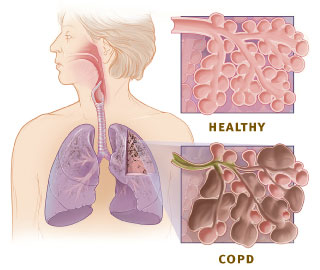Redness over central
face area? Comes and goes? Later on turns to permanent uneven, hard,
rough and red skin?
It may be rosacea.
Rosacea looks like several acnes concentrated in a small area of face
but, it is not. The biggest difference is that rosacea may have acne, while acne does not have the extra blood vessels (called
telangiectasias) found in rosecea.
Rosacea typically
first appears after 30 years of age as a sustained flush, blush or
redness on the cheeks, nose, forehead or chin that may come and go.
Over time, the redness becomes ruddier and more persistent, and
telangiectasia (visible blood vessels) may appear. Some cases, red
domed papules (small bumps) and pustules, red gritty eyes, burning
and stinging sensations, and in some advanced cases, a red lobulated
nose (rhinophyma), may develop. Rosacea, when have acne with it, called
acne rosacea.
There are four forms
of rosacea, which are defined by the following range of symptoms:
1. Mild
(Erythematotelangiectatic) The main symptoms are facial flushing and
redness that may come (Flares) and go. In addition, there may some
swelling, burning and stinging, roughness, and visible red blood
vessels.
2. Moderate
(Papulopustular) This is a more advanced form of rosacea that is
marked by persistent redness and pimplelike bumps (often mistaken for
acne), as well as burning and stinging.
3. Severe
(Phymatous) In some individuals, rosacea may affect the nose, causing
the skin tissue to thicken (giving an enlarged appearance) and become
bumpy. This advanced form of rosacea is called rhinophyma.
4. Ocular rosacea In
addition to skin symptoms, rosacea may also affect the eyes and
eyelids. It may cause redness to the surrounding skin tissue but also
burning or stinging, dryness, light sensitivity, blurred vision, and
watery, bloodshot eyes.
Rosacea is a
chronic, inflammatory and vascular disorder affecting the face, with
facial erythema (redness) being a prominent characteristic.
While the exact
cause of rosacea is unknown; it may run in families, but genetic
predisposition has not been established. Small Intestinal Bacterial
Overgrowth (SIBO) by Helicobacter specis) is also thought to be one of the causes.
Several triggers
have been identified that may make the condition worse.
These include; identifying and avoiding those can be a useful way of controlling the symptoms.
These include; identifying and avoiding those can be a useful way of controlling the symptoms.
- Exposure to sunlight
- Stress
- Strenuous exercise
- Cold weather (wind)
- Heat, hot and humid weather
- Menopause
- Certain medications, such as vasodilator drugs
- Hot drinks
- Alcohol and caffeine
- Spicy foods
- Dairy products
About 70 per cent of
adults aged 50 plus have been shown to have the mite, but previous studies have found that rosacea
sufferers have up to ten times more demodex mites on their skin than
unaffected carriers.
When it dies, the
creature releases a bacteria, bacillus bacterium, which triggers
inflammation in patients who have rosacea, leading to the most
severe form of the condition, papulopustular rosacea.
There has been no
perfect cure for this condition. Some time back, in February, 2014,
one more topical gel Mirvaso® (brimonidine) was approved by
European Commission for marketing in Europe.
Recently, there has
been strong evidence that Ivermectin that kills the demodex mite has
a role to play in the treatment of rosacea through 12 weeks.
Studies have concluded that Ivermectin 1% cream
was effective and safe in treating inflammatory lesions of
papulopustular rosacea.
There has been several other treatment options with varying results;
There has been several other treatment options with varying results;
- Metronidazole cream or gel (topical metronidazole)
- Azelaic acid that helps unblock pores and reduce inflammation (redness and swelling).
- Antibiotics like tetracycline and Erythromycin
- Laser and intense pulsed light (IPL) treatment
- Thickened skin (rhinophyma) may require the attention of a plastic surgeon.
The key to caring
for skin affected by rosacea is to treat it gently.
- Choose products that are non-drying, free of alcohol or astringents.
- Use a mild cleanser and do not rub or scrub skin.
- Make a habit of using sunscreen (SPF 30 or higher) every day.
- Moisturize your skin, especially during the colder months when the air is dry.
Don't s:
- Do not try acne creams because may dry out and irritate your skin even more.
- Alcohol consumption. Alcohol is a known trigger, so, it can worsen symptoms in individuals with rosacea.
- Use medications for blood pressure thinking that the flush is due to high blood pressure.
- Over cleansing with an idea that rosacea results from unclealiness.
- Assume that you have sunburned skin.
There are so many celebrities living with this condition. Let us try ivermectin inrosacea, which has manifold use; from treating scabies, nematodes, lice and immunomodulation to its' potential role as angiogenesis inhibitor in cancer treatment.
...
Click here to Subscribe news feed from "Clinicianonnet; so that you do not miss out anything that can be valuable to you !!
...









